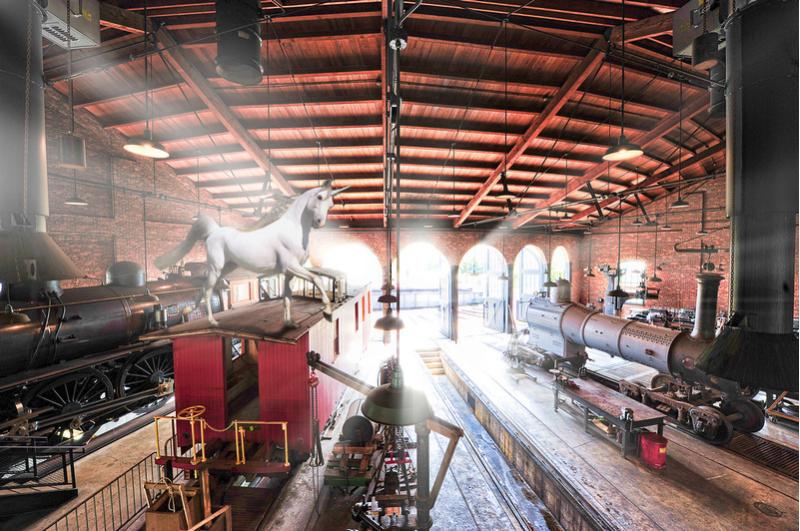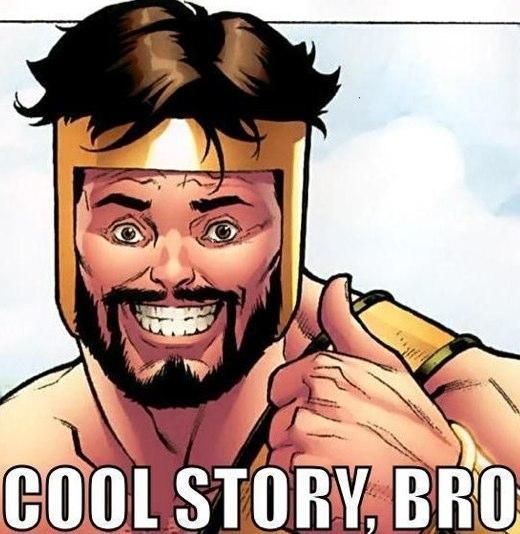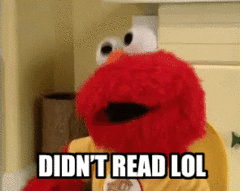- Forum
- Photography and Camera Forum
- Taking the Photo | Editing | The art of Photography!
- Photography Challenge
- Matt's "Fix it in Photoshop" challenge
Matt's "Fix it in Photoshop" challenge
-

- Scotty
- Agent 007
- James Bond, PT mod.
- Followers: 1088
- Posts: 9872
-
Points:
14759
-

- Stealthy Ninja
- Moderator
-
- Fuji X stuff and a 1DsIII for some reason
- Followers: 982
- Posts: 16300
-
Points:
6837
-

- Scotty
- Agent 007
- James Bond, PT mod.
- Followers: 1088
- Posts: 9872
-
Points:
14759
-

- Stealthy Ninja
- Moderator
-
- Fuji X stuff and a 1DsIII for some reason
- Followers: 982
- Posts: 16300
-
Points:
6837
Post #199929
-
 Topic Author
Topic Author
- Henry Peach
- Apprentice
-
- I currently use a 5DII or Sony Nex-3 most of the time.
- Followers: 50
- Posts: 2925
-
Points:
16
-
 Topic Author
Topic Author
- Henry Peach
- Apprentice
-
- I currently use a 5DII or Sony Nex-3 most of the time.
- Followers: 50
- Posts: 2925
-
Points:
16
Post #200591
The strengths and weaknesses of the gear, materials, and the skills and desires of the photographer must be assessed, and then the tools and techniques that will help the photographer best reach their goal can be chosen. It won't be the same path for everyone, even when they are using similar technology and have similar goals.
Processing is vital for all photographs. Even photographers who choose to work with standardized, machine processing (whether chemical or electronic) are well served by an understanding of what the machines are doing. What is going to be a "good exposure" for slide film and standard E6 processing is not the same as what works best when shooting neg film that's going to be hand printed, or a using a digital sensor where the exposure is going to be processed in Photoshop. Whether an exposure is correct or not is relative to the processing. They are two parts of a whole. Remove either exposure or processing and there is no photograph.
There is work that can be done in the darkroom or Photoshop that will result in better quality than if it were done in camera. For example to deal with commonly encountered dynamic range issues I could use a graduated neutral density filter on the lens, or I could burn in the sky in processing (these aren't the only options, but they are popular choices). Using the filter is very easy, but I am limited to the straight line gradient provided by the filter. What if I don't want to darken in a straight line? For instance if my horizon has mountains or buildings it may result in a better finished photograph if I can more precisely control what areas are burned in. The grad ND filter doesn't offer this level of control. For most photographers this sort of precision is only available in processing. IMO whether I burn and dodge the sky using cardboard and wire or a digital tool is insignificant compared to the importance of understanding of how and where burning and dodging could improve my photo.
There is another common perception that Photoshop is effortless and the darkroom is hard work. In the darkroom a typical print exposure time would be 15 to 45 sec. In most cases my burning and dodging has to be completed within this time limit. Because of this short window of opportunity I cannot achieve extremely precise burning and dodging. This is easily seen in many mountain landscape silver gelatin prints. Notice that the mountain tops are often burned along with the sky. That's the level of precision I am afforded in 30 sec. In Photoshop I could work on the sky all day, until the photo matches my vision of the scene when I decided to take the pic. I can invest almost unlimited time and effort achieving the level of precision required to make the photo exactly like I wanted.
Using a typical photofinishing lab I spend 30 min driving to the lab and dropping off the film, which is then processed and printed in a few minutes when it's turn comes. In the darkroom I spend 30 min mopping the floors and temping chems, and then a few minutes on the print. In Photoshop I get to spend the full 30 min working directly on the photo. All three examples used up 30 min of my time, but in one of them I spent all that time directly in the creation of the photograph.
On the other side of the coin in the darkroom I can spend a couple of days making and using an unsharp mask. In Photoshop it takes a few seconds. People may be more impressed with my effort in making the film mask, but the effect on the finished photos is the same (actually it's not, because I give up and accept the film mask even if it's not quite right after a couple of tries, while in Photoshop achieving perfection only takes a smidge more concentration). Because it's so time consuming very few of my film photographs ever got unsharp masking. I saved it for a few special photos every year. Because it's so easy all of my digital photographs can get unsharp masking. Even snap shots. Does it make them more than snaps? Nope, but they are nicer looking snaps than they were before.
Blaming Photoshop and/or digital photography for a lack of skill or taste or restraint in the photographer is no different than blaming film for all the lousy photos that have been taken using that technology. Both technologies make photography easy enough that anyone who is interested in learning it should be able to do so with some study and practice.
I do think digital has raised the bar on what we consider mediocre. Instant feedback is a big advantage in learning skills and technique. It also provides inspiration to keep trying and learning. I don't think people are better at photography because digital makes it easier. I think people are better at photography because digital makes it more fun. When something is a lot of fun people are more likely to become passionate about it. In the end, for all the new folks who are now into photography, truly intriguing and exciting photographs are as rare as they've ever been, because great ideas have nothing to do with gear or process.
Whew! Who's next up on the soapbox?
-
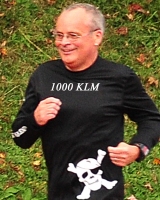
- Darrell
- Apprentice
-
- Nikon D7000 & D70
- Followers: 27
- Posts: 2059
-
Points:
0
-
 Topic Author
Topic Author
- Henry Peach
- Apprentice
-
- I currently use a 5DII or Sony Nex-3 most of the time.
- Followers: 50
- Posts: 2925
-
Points:
16
Post #200599
www.vividlight.com/articles/103.htm
www.huntingtonwitherill.com/resources/articles_farewell.php
-

- Scotty
- Agent 007
- James Bond, PT mod.
- Followers: 1088
- Posts: 9872
-
Points:
14759
Post #200613
Henry Peach wrote: I am frustrated with the common perception that processing is not as important as camera work. I believe this canard is mostly rooted in people being ignorant of film processing technique, while they tend to be more familiar with digital processing technique, or at least think they are. In their minds the difference between chemical and electronic methods is more important than the similarity in fundamental image management concepts that have been around for a long, long time.
The strengths and weaknesses of the gear, materials, and the skills and desires of the photographer must be assessed, and then the tools and techniques that will help the photographer best reach their goal can be chosen. It won't be the same path for everyone, even when they are using similar technology and have similar goals.
Processing is vital for all photographs. Even photographers who choose to work with standardized, machine processing (whether chemical or electronic) are well served by an understanding of what the machines are doing. What is going to be a "good exposure" for slide film and standard E6 processing is not the same as what works best when shooting neg film that's going to be hand printed, or a using a digital sensor where the exposure is going to be processed in Photoshop. Whether an exposure is correct or not is relative to the processing. They are two parts of a whole. Remove either exposure or processing and there is no photograph.
There is work that can be done in the darkroom or Photoshop that will result in better quality than if it were done in camera. For example to deal with commonly encountered dynamic range issues I could use a graduated neutral density filter on the lens, or I could burn in the sky in processing (these aren't the only options, but they are popular choices). Using the filter is very easy, but I am limited to the straight line gradient provided by the filter. What if I don't want to darken in a straight line? For instance if my horizon has mountains or buildings it may result in a better finished photograph if I can more precisely control what areas are burned in. The grad ND filter doesn't offer this level of control. For most photographers this sort of precision is only available in processing. IMO whether I burn and dodge the sky using cardboard and wire or a digital tool is insignificant compared to the importance of understanding of how and where burning and dodging could improve my photo.
There is another common perception that Photoshop is effortless and the darkroom is hard work. In the darkroom a typical print exposure time would be 15 to 45 sec. In most cases my burning and dodging has to be completed within this time limit. Because of this short window of opportunity I cannot achieve extremely precise burning and dodging. This is easily seen in many mountain landscape silver gelatin prints. Notice that the mountain tops are often burned along with the sky. That's the level of precision I am afforded in 30 sec. In Photoshop I could work on the sky all day, until the photo matches my vision of the scene when I decided to take the pic. I can invest almost unlimited time and effort achieving the level of precision required to make the photo exactly like I wanted.
Using a typical photofinishing lab I spend 30 min driving to the lab and dropping off the film, which is then processed and printed in a few minutes when it's turn comes. In the darkroom I spend 30 min mopping the floors and temping chems, and then a few minutes on the print. In Photoshop I get to spend the full 30 min working directly on the photo. All three examples used up 30 min of my time, but in one of them I spent all that time directly in the creation of the photograph.
On the other side of the coin in the darkroom I can spend a couple of days making and using an unsharp mask. In Photoshop it takes a few seconds. People may be more impressed with my effort in making the film mask, but the effect on the finished photos is the same (actually it's not, because I give up and accept the film mask even if it's not quite right after a couple of tries, while in Photoshop achieving perfection only takes a smidge more concentration). Because it's so time consuming very few of my film photographs ever got unsharp masking. I saved it for a few special photos every year. Because it's so easy all of my digital photographs can get unsharp masking. Even snap shots. Does it make them more than snaps? Nope, but they are nicer looking snaps than they were before.
Blaming Photoshop and/or digital photography for a lack of skill or taste or restraint in the photographer is no different than blaming film for all the lousy photos that have been taken using that technology. Both technologies make photography easy enough that anyone who is interested in learning it should be able to do so with some study and practice.
I do think digital has raised the bar on what we consider mediocre. Instant feedback is a big advantage in learning skills and technique. It also provides inspiration to keep trying and learning. I don't think people are better at photography because digital makes it easier. I think people are better at photography because digital makes it more fun. When something is a lot of fun people are more likely to become passionate about it. In the end, for all the new folks who are now into photography, truly intriguing and exciting photographs are as rare as they've ever been, because great ideas have nothing to do with gear or process.
Whew! Who's next up on the soapbox?
When the last candle has been blown out
and the last glass of champagne has been drunk
All that you are left with are the memories and the images-David Cooke.
-

- rmeyer7
- Master of the Lens
-
- Canon 6D, Canon 5D mk. ii, Canon 50D
- Followers: 105
- Posts: 1640
-
Points:
2086
Post #200653
-

- Scotty
- Agent 007
- James Bond, PT mod.
- Followers: 1088
- Posts: 9872
-
Points:
14759
Post #202637
Excellent thread btw.
When the last candle has been blown out
and the last glass of champagne has been drunk
All that you are left with are the memories and the images-David Cooke.
-
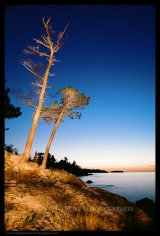
- Karl Wertanen
- The Lounger
-
- Mamiya 7II Medium Format 6x7 Rangefinder Film Camera, Mamiya RZ67 Pro II Medium Format 6x7 Film Camera, and a few Minlolta Maxxum 35mm Film cameras
- Followers: 220
- Posts: 1342
-
Points:
10
Post #202641
rmeyer7 wrote: Matt, that may have been the longest response in these forums that I've ever actually read from start to finish (sometimes I skim very long responses instead of reading them entirely). But yours was well worth reading. You contribute more to discussions on this site than just an opinion; you bring facts, knowledge and experience to the table. Good post, sir.


-

- Karl Wertanen
- The Lounger
-
- Mamiya 7II Medium Format 6x7 Rangefinder Film Camera, Mamiya RZ67 Pro II Medium Format 6x7 Film Camera, and a few Minlolta Maxxum 35mm Film cameras
- Followers: 220
- Posts: 1342
-
Points:
10
Post #202642
Henry Peach wrote: I am frustrated with the common perception that processing is not as important as camera work. I believe this canard is mostly rooted in people being ignorant of film processing technique, while they tend to be more familiar with digital processing technique, or at least think they are. In their minds the difference between chemical and electronic methods is more important than the similarity in fundamental image management concepts that have been around for a long, long time.
The strengths and weaknesses of the gear, materials, and the skills and desires of the photographer must be assessed, and then the tools and techniques that will help the photographer best reach their goal can be chosen. It won't be the same path for everyone, even when they are using similar technology and have similar goals.
Processing is vital for all photographs. Even photographers who choose to work with standardized, machine processing (whether chemical or electronic) are well served by an understanding of what the machines are doing. What is going to be a "good exposure" for slide film and standard E6 processing is not the same as what works best when shooting neg film that's going to be hand printed, or a using a digital sensor where the exposure is going to be processed in Photoshop. Whether an exposure is correct or not is relative to the processing. They are two parts of a whole. Remove either exposure or processing and there is no photograph.
There is work that can be done in the darkroom or Photoshop that will result in better quality than if it were done in camera. For example to deal with commonly encountered dynamic range issues I could use a graduated neutral density filter on the lens, or I could burn in the sky in processing (these aren't the only options, but they are popular choices). Using the filter is very easy, but I am limited to the straight line gradient provided by the filter. What if I don't want to darken in a straight line? For instance if my horizon has mountains or buildings it may result in a better finished photograph if I can more precisely control what areas are burned in. The grad ND filter doesn't offer this level of control. For most photographers this sort of precision is only available in processing. IMO whether I burn and dodge the sky using cardboard and wire or a digital tool is insignificant compared to the importance of understanding of how and where burning and dodging could improve my photo.
There is another common perception that Photoshop is effortless and the darkroom is hard work. In the darkroom a typical print exposure time would be 15 to 45 sec. In most cases my burning and dodging has to be completed within this time limit. Because of this short window of opportunity I cannot achieve extremely precise burning and dodging. This is easily seen in many mountain landscape silver gelatin prints. Notice that the mountain tops are often burned along with the sky. That's the level of precision I am afforded in 30 sec. In Photoshop I could work on the sky all day, until the photo matches my vision of the scene when I decided to take the pic. I can invest almost unlimited time and effort achieving the level of precision required to make the photo exactly like I wanted.
Using a typical photofinishing lab I spend 30 min driving to the lab and dropping off the film, which is then processed and printed in a few minutes when it's turn comes. In the darkroom I spend 30 min mopping the floors and temping chems, and then a few minutes on the print. In Photoshop I get to spend the full 30 min working directly on the photo. All three examples used up 30 min of my time, but in one of them I spent all that time directly in the creation of the photograph.
On the other side of the coin in the darkroom I can spend a couple of days making and using an unsharp mask. In Photoshop it takes a few seconds. People may be more impressed with my effort in making the film mask, but the effect on the finished photos is the same (actually it's not, because I give up and accept the film mask even if it's not quite right after a couple of tries, while in Photoshop achieving perfection only takes a smidge more concentration). Because it's so time consuming very few of my film photographs ever got unsharp masking. I saved it for a few special photos every year. Because it's so easy all of my digital photographs can get unsharp masking. Even snap shots. Does it make them more than snaps? Nope, but they are nicer looking snaps than they were before.
Blaming Photoshop and/or digital photography for a lack of skill or taste or restraint in the photographer is no different than blaming film for all the lousy photos that have been taken using that technology. Both technologies make photography easy enough that anyone who is interested in learning it should be able to do so with some study and practice.
I do think digital has raised the bar on what we consider mediocre. Instant feedback is a big advantage in learning skills and technique. It also provides inspiration to keep trying and learning. I don't think people are better at photography because digital makes it easier. I think people are better at photography because digital makes it more fun. When something is a lot of fun people are more likely to become passionate about it. In the end, for all the new folks who are now into photography, truly intriguing and exciting photographs are as rare as they've ever been, because great ideas have nothing to do with gear or process.
Whew! Who's next up on the soapbox?
-

- Stealthy Ninja
- Moderator
-
- Fuji X stuff and a 1DsIII for some reason
- Followers: 982
- Posts: 16300
-
Points:
6837
-

- Stealthy Ninja
- Moderator
-
- Fuji X stuff and a 1DsIII for some reason
- Followers: 982
- Posts: 16300
-
Points:
6837
Post #202681
- Forum
- Photography and Camera Forum
- Taking the Photo | Editing | The art of Photography!
- Photography Challenge
- Matt's "Fix it in Photoshop" challenge
Latest Reviews
The Canon EOS R100 is an entry-level mirrorless camera introduced in 2023. But just because it’s an entry-level camera doesn’t mean it’s a bare-bones camera. Find out why in this review!
Nikon’s retro-looking Nikon Zfc is anything but retro. Under its classic body is a host of features and amenities that make it a worthwhile compact mirrorless camera for 2024.
The Canon EOS R50 is one of the newest R-system cameras from Canon. Is it worth your money? Find out all the details you need to know in this comprehensive review.
The Sony FE 70-200mm f/2.8 GM OSS II is Sony’s flagship mirrorless zoom lens. As such, it’s loaded with features and has a top-shelf build quality that makes it a top pick!
Latest Articles
Using leading lines in photography helps improve the composition by drawing viewers in and leading their eye from the foreground to the background. Explore some fine examples of this in this guide!
The Insta360 has one of the best lineups of action cams and 360-degree cameras. With these Insta360 accessories, you can elevate your photography and videography game!
Creating impactful photos of landscapes depends on many factors, not the least of which is your talent behind the lens. This guide explores other elements required for the best product.
The Canon EOS R100 is an entry-level mirrorless camera introduced in 2023. But just because it’s an entry-level camera doesn’t mean it’s a bare-bones camera. Find out why in this review!
Are you ready to upgrade your camera? Before buying new, you might consider the value of purchasing used gear to save money.
The Olympus OM-D E-M10 Mark IV is a micro four thirds camera released in 2020. It’s an entry-level system along with the OM-D E-M5 Mark III. Use this guide to determine which one is best for you!
Blue hour photography might not be as well known as golden hour photography, but it is every bit as good a time to create epic images of landscapes. Learn how in this quick tutorial!
Nikon’s retro-looking Nikon Zfc is anything but retro. Under its classic body is a host of features and amenities that make it a worthwhile compact mirrorless camera for 2024.










